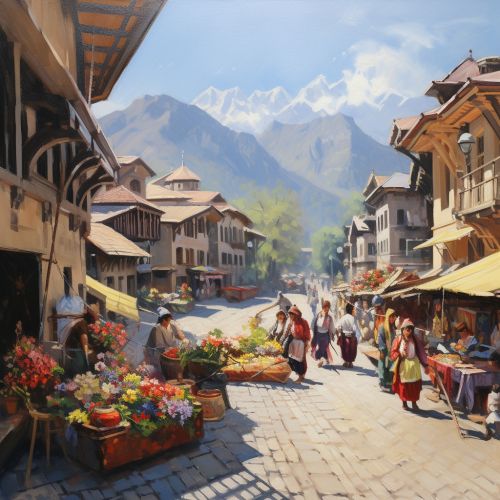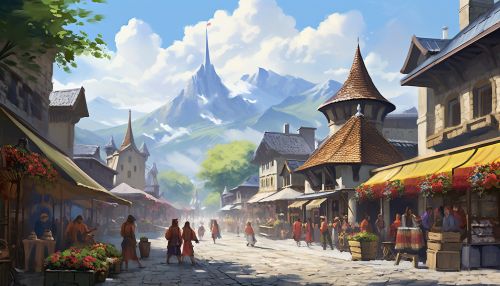Culture of the Caucasus
Introduction
The Caucasus is a region located at the border of Eastern Europe and Western Asia, situated between the Black and the Caspian seas. It is home to the Caucasus Mountains, which contain Europe's highest peak, Mount Elbrus. The culture of the Caucasus is rich and diverse, with a history that spans thousands of years and encompasses a wide range of ethnic groups, languages, religions, and traditions.
Ethnic Groups and Languages
The Caucasus is one of the most ethnically diverse regions in the world, with over 50 ethnic groups living within its borders. These include the Georgians, Armenians, Azerbaijanis, Chechens, Abkhazians, Ossetians, and many others. Each of these groups has its own unique culture, traditions, and language.
The languages spoken in the Caucasus belong to several different language families. The majority of the population speaks languages from the Indo-European and Turkic language families. However, the region is also home to the Caucasian language family, which includes three distinct language groups: the Northwest Caucasian, Northeast Caucasian, and South Caucasian or Kartvelian languages.


Religion
Religion plays a significant role in the culture of the Caucasus. The region is predominantly Christian and Muslim, with a small number of Jewish, pagan, and other religious communities. The Eastern Orthodox Church is the largest Christian denomination in the region, particularly among the Georgians and some Ossetians. The Armenian Apostolic Church is the predominant religion in Armenia. Islam, both Sunni and Shia, is practiced by the Azerbaijanis, Chechens, and several other ethnic groups.
Despite the predominance of Christianity and Islam, traditional beliefs and practices continue to play a significant role in many communities. These often coexist with the major religions, resulting in a unique blend of religious practices and beliefs.
Art and Literature
The Caucasus has a rich tradition of art and literature. This includes the epic poetry of the Georgians, the intricate miniature paintings of the Azerbaijanis, and the vibrant dance and music traditions of the Chechens and other groups.
Georgian literature dates back to the 5th century AD and includes the epic poem "The Knight in the Panther's Skin" by Shota Rustaveli. Azerbaijani literature is known for its epic narratives, such as "The Book of Dede Korkut," and the works of the 12th-century poet Nizami Ganjavi.
Visual arts in the Caucasus are characterized by a rich use of color and intricate patterns. This is evident in the Azerbaijani tradition of miniature painting, the Georgian tradition of enamel art, and the Armenian tradition of carpet weaving.
Cuisine
Cuisine in the Caucasus is as diverse as its people. It is characterized by the use of fresh, local ingredients, and a wide variety of herbs and spices. Georgian cuisine is known for its hearty stews, breads, and the famous cheese-filled bread khachapuri. Armenian cuisine features a variety of meat dishes, including khorovats (Armenian barbecue), and lavash, a thin flatbread. Azerbaijani cuisine is rich in vegetables, meats, and fish, and is known for dishes like plov (a type of pilaf) and dolma (stuffed grape leaves).
Conclusion
The culture of the Caucasus is a rich tapestry of diverse ethnic groups, languages, religions, and traditions. It is a region where ancient customs coexist with modern influences, creating a unique cultural landscape that is both fascinating and complex.
